Fantasia 2018, Day 18, Part 2: One Cut of the Dead
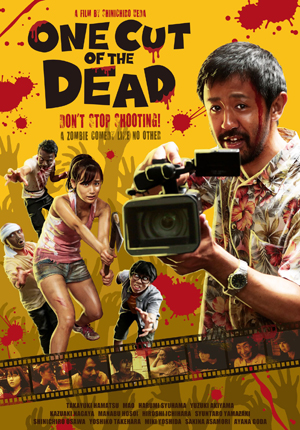 I settled in at the Hall Theatre on the evening of Sunday, July 29, to watch a movie about which I knew little. I knew it was Japanese, I knew it was titled One Cut of the Dead (Kamera o tomeru na!, カメラを止めるな!), and I knew it was written and directed by Shinichiro Ueda. The movie ended up being excellent and even uplifting. But writing about it presents a challenge.
I settled in at the Hall Theatre on the evening of Sunday, July 29, to watch a movie about which I knew little. I knew it was Japanese, I knew it was titled One Cut of the Dead (Kamera o tomeru na!, カメラを止めるな!), and I knew it was written and directed by Shinichiro Ueda. The movie ended up being excellent and even uplifting. But writing about it presents a challenge.
(Before the feature there was a short called “Crying Bitch.” Written and directed by Reiki Tsuno, it follows a man who tries to break up with his mistress while his wife is becoming a literal monster. Things don’t go as planned for him all down the line. It has some effective physical comedy and unexpected moments.)
One Cut of the Dead is a movie that starts out one way, and then a bit past the half-hour mark reveals that it’s something other than the one-cut zombie comedy-thriller we thought we were watching. In an ideal world, viewers would go into the film blind, I suppose. In this world, I’d like to actually write about what I saw; and in any event I didn’t go in blind, exactly, and that didn’t hurt my experience of the film. So I’ll say that if you want to have a real surprise, don’t read further in this review. But do see the film if you want to watch a comedy with a few horror elements. I think it is worth pointing out that this isn’t a zombie movie, as such, for all its initial appearances.
Let’s start with that first half-hour take. We’re watching a zombie movie being made, with a manic director (Takayuki Hamatsu), a couple young fresh-faced stars, and assorted crew including a makeup lady (Harumi Shuhama). What we’re watching is being filmed in one take, the camera roaming around as various people drift by in the old abandoned warehouse where the movie’s set. And then there’s a zombie attack for real, and the director loves it.
But there’s something weird about this movie. Sure, we see a cameraman, but who’s filming the cameraman? Dialogue’s random, setting things up that never seem to get paid off. Everything moves very well, and it’s a fun film to watch, but one might think it all feels a little ramshackle. And then the twist comes that explains what we’ve just seen.
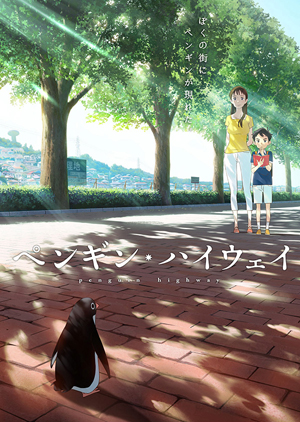 Sunday, July 29, was an intriguing day. Not so much because of the first movie I planned to see, an anime called Penguin Highway about a young boy investigating the mysterious appearance of penguins in his small Japanese town. But because of the second screening, the International Science-Fiction Short Film Showcase 2018. It’d present eight films, and having seen prior editions of the showcase, I knew how unpredictable it would be.
Sunday, July 29, was an intriguing day. Not so much because of the first movie I planned to see, an anime called Penguin Highway about a young boy investigating the mysterious appearance of penguins in his small Japanese town. But because of the second screening, the International Science-Fiction Short Film Showcase 2018. It’d present eight films, and having seen prior editions of the showcase, I knew how unpredictable it would be.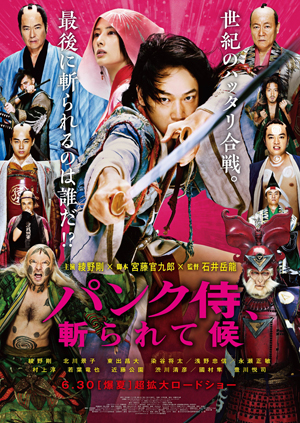 The last movie I saw on Saturday, July 28, was at the Hall Theatre. It was Punk Samurai Slash Down (Panku Samurai Kirarete Soro, パンク侍、斬られて候), an adaptation of Ko Machida’s 2004 novel directed by Gakuryu Ishii and scripted by Kankuro Kodo (who also wrote
The last movie I saw on Saturday, July 28, was at the Hall Theatre. It was Punk Samurai Slash Down (Panku Samurai Kirarete Soro, パンク侍、斬られて候), an adaptation of Ko Machida’s 2004 novel directed by Gakuryu Ishii and scripted by Kankuro Kodo (who also wrote  Saturday, July 28, saw me arrive at the Hall Theatre early for a showing of the Japanese historical fantasy Laughing Under the Clouds, yet another manga adaptation. Following that, I’d head across the street to the J.A. De Sève Theatre, where I’d watch a short film showcase called Afromentum. It’d feature four short films by Black filmmakers from around the world — including an adaptation of Nnedi Okorafor’s short story “Hello, Moto.”
Saturday, July 28, saw me arrive at the Hall Theatre early for a showing of the Japanese historical fantasy Laughing Under the Clouds, yet another manga adaptation. Following that, I’d head across the street to the J.A. De Sève Theatre, where I’d watch a short film showcase called Afromentum. It’d feature four short films by Black filmmakers from around the world — including an adaptation of Nnedi Okorafor’s short story “Hello, Moto.”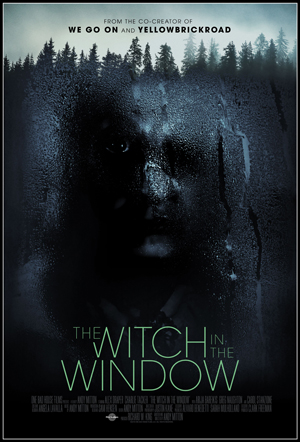 I had two movies to see on Friday, July 29. The first, perfectly fitting the small De Sève Theatre, was The Witch in the Window, a quiet character-centred horror film. The second was another live-action manga adaptation, Ajin: Demi-Human, a fast-paced explosion-oriented semi-super-hero story which fit the larger Hall Theatre as well as The Witch in the Window suited the De Sève. I had certain hopes for both, and in both cases those hopes were wildly exceeded. These are two excellent movies, of very different kinds.
I had two movies to see on Friday, July 29. The first, perfectly fitting the small De Sève Theatre, was The Witch in the Window, a quiet character-centred horror film. The second was another live-action manga adaptation, Ajin: Demi-Human, a fast-paced explosion-oriented semi-super-hero story which fit the larger Hall Theatre as well as The Witch in the Window suited the De Sève. I had certain hopes for both, and in both cases those hopes were wildly exceeded. These are two excellent movies, of very different kinds.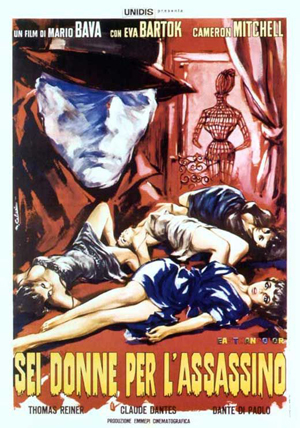 On the evening of Thursday, July 26, I made my way to the Cinémathèque Québécois, well east of the main Fantasia theatres, for a screening of a film classic. Fantasia was presenting Mario Bava’s classic 1964 horror-mystery film Blood and Black Lace (Sei donne per l’assassino). It’s one of the first giallo films, a genre of surreal thriller particularly identified with Italian directors. This was the original 88-minute Italian version, restored by Arrow Films for their recent blu-ray edition of the film.
On the evening of Thursday, July 26, I made my way to the Cinémathèque Québécois, well east of the main Fantasia theatres, for a screening of a film classic. Fantasia was presenting Mario Bava’s classic 1964 horror-mystery film Blood and Black Lace (Sei donne per l’assassino). It’s one of the first giallo films, a genre of surreal thriller particularly identified with Italian directors. This was the original 88-minute Italian version, restored by Arrow Films for their recent blu-ray edition of the film.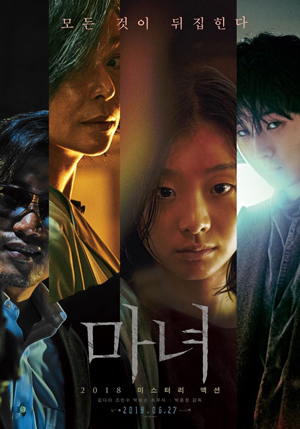 I had two movies on my schedule for Wednesday, July 25. The first was The Witch: Part 1. The Subversion, a Korean action movie with super-hero elements. The second was a German-language Swiss movie called Blue My Mind, about a teenager moving to a new school and finding herself undergoing a strange metamorphosis. Both films were about young women, and both leads had elements of the inhuman to them. But these things were expressed in very different ways.
I had two movies on my schedule for Wednesday, July 25. The first was The Witch: Part 1. The Subversion, a Korean action movie with super-hero elements. The second was a German-language Swiss movie called Blue My Mind, about a teenager moving to a new school and finding herself undergoing a strange metamorphosis. Both films were about young women, and both leads had elements of the inhuman to them. But these things were expressed in very different ways.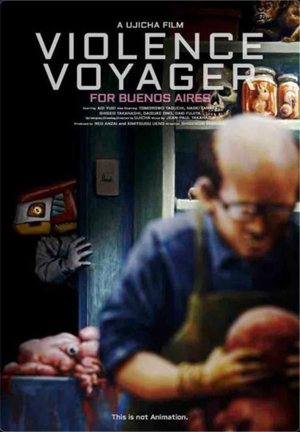 Late in the evening of Tuesday, July 24, I made my way to the J.A. De Sève Theatre for my one film of the day: Violence Voyager, an 83-minute animated feature by Japanese writer-director Ujicha. We follow an American schoolboy in Japan, Bobby (Aoi Yuki), as he and his friend explore some hills near his home. They find a strange, nearly-abandoned amusement park, but upon entering find themselves caught up in a terrible scheme. They and other children are captured, mutilated, mutated, and (in many cases) killed. Can Bobby free himself and others, and destroy the horrible place called Violence Voyager?
Late in the evening of Tuesday, July 24, I made my way to the J.A. De Sève Theatre for my one film of the day: Violence Voyager, an 83-minute animated feature by Japanese writer-director Ujicha. We follow an American schoolboy in Japan, Bobby (Aoi Yuki), as he and his friend explore some hills near his home. They find a strange, nearly-abandoned amusement park, but upon entering find themselves caught up in a terrible scheme. They and other children are captured, mutilated, mutated, and (in many cases) killed. Can Bobby free himself and others, and destroy the horrible place called Violence Voyager?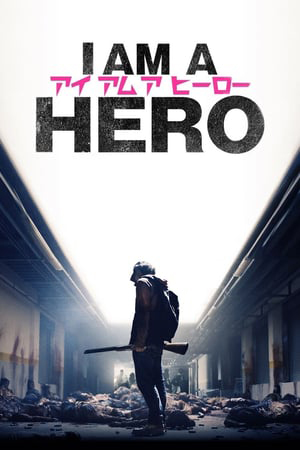
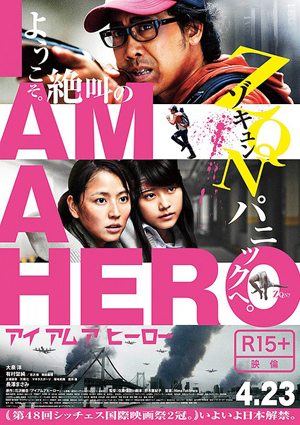 I had three consecutive movies I wanted to watch on July 23. All three came from director Shinsuke Sato, all three were live-action manga adaptations, and all three were followed by question-and-answer sessions with Sato (the first at the De Sève Theatre, the second two at the larger Hall). I’ll write up what he had to say about his films in a separate post tomorrow. Today, my impressions of the movies themselves: the zombie apocalypse thriller I Am a Hero, the supernatural epic Bleach, and the science-fictional super-hero movie Inuyashiki. Note that I have read precisely none of the original works these movies were based on, and can speak only to the films I saw.
I had three consecutive movies I wanted to watch on July 23. All three came from director Shinsuke Sato, all three were live-action manga adaptations, and all three were followed by question-and-answer sessions with Sato (the first at the De Sève Theatre, the second two at the larger Hall). I’ll write up what he had to say about his films in a separate post tomorrow. Today, my impressions of the movies themselves: the zombie apocalypse thriller I Am a Hero, the supernatural epic Bleach, and the science-fictional super-hero movie Inuyashiki. Note that I have read precisely none of the original works these movies were based on, and can speak only to the films I saw.